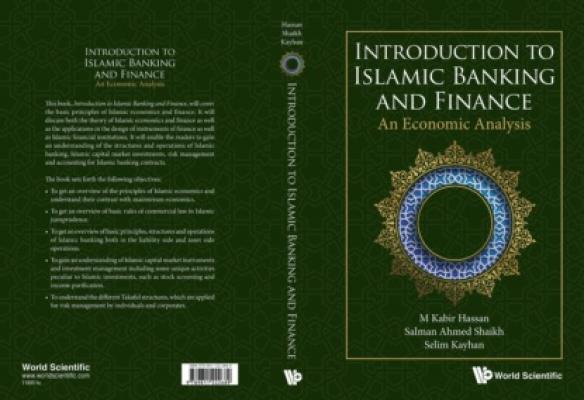Introduction to Islamic Banking and Finance. M Kabir Hassan
Читать онлайн.| Название | Introduction to Islamic Banking and Finance |
|---|---|
| Автор произведения | M Kabir Hassan |
| Жанр | Банковское дело |
| Серия | |
| Издательство | Банковское дело |
| Год выпуска | 0 |
| isbn | 9789811222702 |
Self-Assessment Quiz
1.In which type of the investment partnership, the capital is solely provided by one partner:
(a)Musharakah
(b)Mudarabah
(c)Wakalah
(d)All of the above
2.In the conventional capitalist system, the user cost of capital assigns real rate of interest as compensation of:
(a)Land
(b)Physical capital stock
(c)Money capital
(d)Both (a) and (b)
(e)Both (b) and (c)
3.In collateral based lending, which types of clients are mostly able to secure financing from commercial banks?
(a)Small scale start-ups who want to borrow to setup business
(b)Large scale corporations with business history
(c)Entrepreneurs with a budding business idea who lack resources
(d)Social entrepreneurs investing in a project of high social significance
4.Which factors will lead to a rightward shift in saving surplus units supply curve of investible funds in Islamic capital markets?
(a)Increase in Sharpe ratio
(b)Greater patience in the consumers
(c)Lower loss aversion
(d)All of the above
5.Which factors will lead to a downward shift in saving deficient units demand curve for investible funds in Islamic capital markets?
(a)Lower capital requirement
(b)Shorter duration of the investment
(c)Higher Sharpe ratio
(d)All of the above
Self-Assessment Questions
1.What is the user cost of capital in mainstream economics?
2.What is the rationale of interest charged and stipulated on money capital in conventional economics?
3.Critically evaluate the rationale of interest charged and stipulated on money capital in conventional economics.
4.Illustrate numerically how interest-based leverage increases the prices of goods in the goods market by adding as an additional operating cost in product costing?
5.If producers increase the prices in proportion to the additional cost incurred in obtaining interest-based leverage, is it fair to say that the eventual cost of interest is paid by the consumers?
6.Illustrate the flow of funds and equilibrium in the Islamic capital markets.
7.Identify the factors determining a change in savings supply and investment demand in the Islamic capital markets.
8.Discuss the economic role of Islamic banking in facilitating investments and financing needs for the short term.
9.Illustrate the Islamic economic framework through commodity and monetary flow of funds in goods and resource markets involving households, producers and Islamic banks.
10.Discuss how Islamic banks facilitate real economic activity in the purchase of assets in the goods and resource markets.
Appendix A.1: Effects of Zakat on Wealth Redistribution
This appendix provides an illustration of how the institution of Zakat in an Islamic economy encourages investment and provides a disincentive for hoarding wealth. For a particular individual, net Zakat wealth at a point in time is given by Equation (A.1):
Here, Yt represents the income of an individual in period t. At − 1 represents the total value of endowments carried forward from the last period. Ct represents the consumption expenditure in time period t. ROZ represents the rate of Zakat, which is 2.5% on surplus wealth.
Further expansion of Equation (A.1) yields
Applying the 2.5% value of ROZ in Equation (A.2) yields
If the equation is expanded iteratively forward, it becomes
The wealth function will reduce At − 1 in the subsequent time period. The increase in wealth only depends on enhancing Yt or reducing Ct. This shows that only labour income or financial income which involves productive enterprise and risk taking along with moderation in consumption can enhance the wealth.
__________________
1 Hall, R. E. and Jorgenson, D. W. (1967). “Tax Policy and Investment Behavior”, American Economic Review, 57(3), 391–414.
2 Haque, N. and Mirakhor, A. (1986). Saving Behaviour in an Economy without Fixed Interest. Discussion Paper, Development and Research Department, Economics and Research Staff, Report No. DRD184.
3 Hassan, M. K. and Aldayel, A. Q. (1998). “Stability of Money Demand Under Interest-Free Versus Interest-Based Banking System”, Humanomics, 14(4), 166–185.
Конец ознакомительного фрагмента.
Текст предоставлен ООО «ЛитРес».
Прочитайте эту книгу целиком, купив полную легальную версию на ЛитРес.
Безопасно оплатить книгу можно банковской картой Visa, MasterCard, Maestro, со счета мобильного телефона, с платежного терминала, в салоне МТС или Связной, через PayPal, WebMoney, Яндекс.Деньги, QIWI Кошелек, бонусными картами или другим удобным Вам способом.
